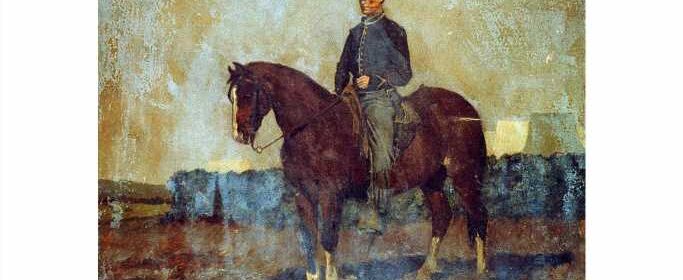States With the Most Civil War Cavalry

The American Civil War was a period of significant milestones in the history of military cavalry. Not only did America’s use of cavalry peak in the Civil War with more than 1 million cavalry troops between the Union and the Confederate forces, but the role of cavalry also evolved. Limited at first to scouting, patrolling, and escort missions, by the end of the war, mounted cavalry troops were effective and highly mobile strike forces.
While the function of horse-mounted cavalry units in the U.S. military is now strictly ceremonial, in the Civil War, they were indispensable to both Union and Confederate armies, accounting for nearly one-in-every-five enlisted soldiers, according to government records.
In most aspects of the war, from money and manpower to guns and supplies, the Confederacy was outmatched by federal forces – and cavalry units were no exception. According to The Civil War Soldiers and Sailors Database, maintained by the National Park Service, Union armies had more than 675,000 cavalry troops throughout the war, compared to about 467,000 mounted Confederate troops. This imbalance is also reflected in Civil War cavalry enlistment figures by state or territory.
Using historical records compiled by the NPS, 24/7 Wall St. identified the states with the most cavalry troops in the Civil War.
Though most Union cavalry units were formed in Northern states, some were also assembled in the South. Supplementary data on the number of cavalry units formed for the preservation of the United States within each state or territory is from A Compendium of the War of the Rebellion by Civil War statistician Frederick H. Dyer, first published in 1908. Companies generally comprised about 1,200 mounted troops, while battalions were made up of about 330, and companies 100. (Here is a look at the 20 largest armies assembled during the Civil War.)
In cavalry units of both the North and South, cavalry troop weaponry typically consisted of sabers, revolvers, and breech-loading, single-shot or repeating carbines. Cavalry firearms were relatively easy to reload on horseback, and though cavalry carbines had limited range, relative to infantry rifles, their shorter barrels made them more maneuverable. Many confederate cavalry troops also carried sawed-off shotguns and cut-down hunting rifles. (Here is a look at 22 guns that helped fight the Civil War.)
Click here to see states with the most civil war cavalry.
Sponsored: Find a Qualified Financial Advisor
Finding a qualified financial advisor doesn’t have to be hard. SmartAsset’s free tool matches you with up to 3 fiduciary financial advisors in your area in 5 minutes. Each advisor has been vetted by SmartAsset and is held to a fiduciary standard to act in your best interests. If you’re ready to be matched with local advisors that can help you achieve your financial goals, get started now.
Source: Read Full Article
